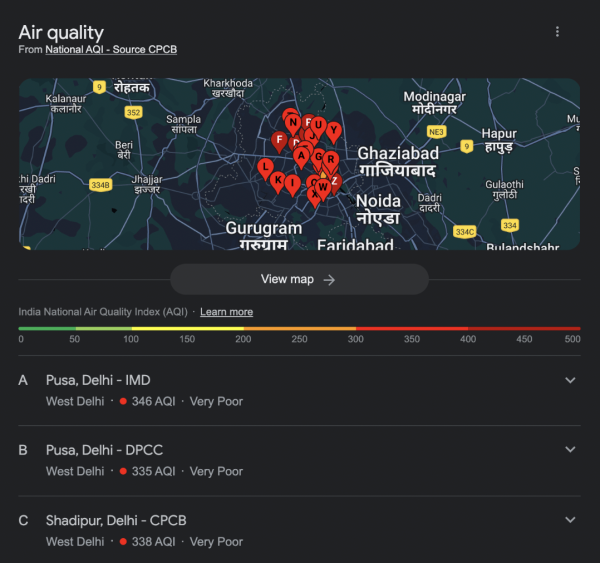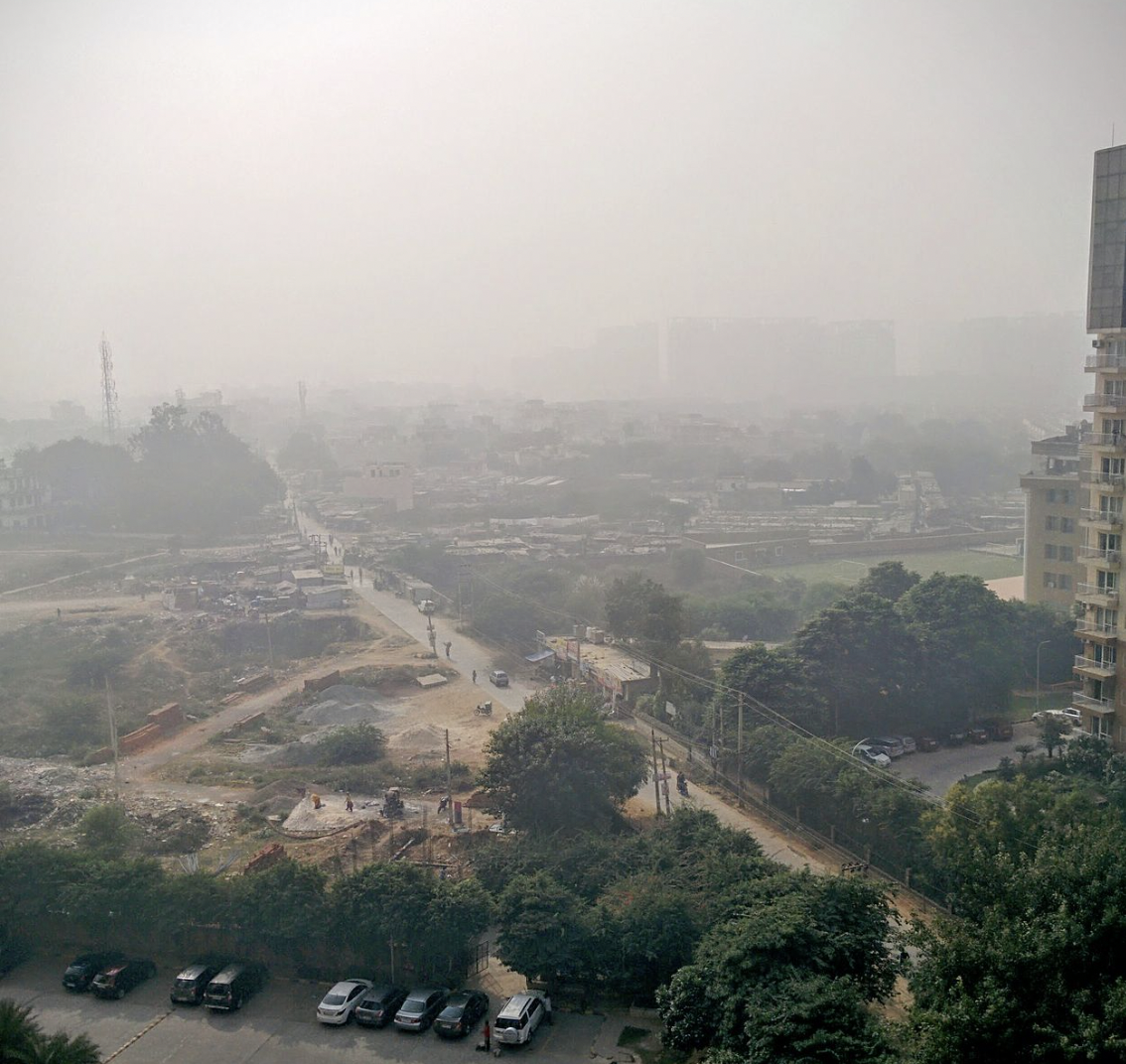Air pollution has always been prominent in largely populated cities that contain high amounts of vehicular population and industrial waste, and New Delhi, India, had its hardest hit. This is an annual occurrence, and this year, air pollution has been more recognized, for it disrupted the Cricket World Cup. Now, authorities are trying various methods to clear the city of the smog.
The air pollution with the concentration of PM 2.5 is nearly 80 times the World Health Organization’s recommended limit, according to CNN. The Air Quality Index (AQI) has consistently shown “very poor” air quality all around New Delhi. At the end of 2023, the AQI was consistently in the 300s, and even hit 450 at times. In Jan. of 2024, the AQI is still in the high  300s. According to lung specialists, breathing this toxic air is akin to smoking 25-30 cigarettes a day.
300s. According to lung specialists, breathing this toxic air is akin to smoking 25-30 cigarettes a day.
The environmental status in New Delhi remains unstable. In Dec. of 2023, Delhi’s Environment Minister Gopal Rai had asked all schools to remain shut for a few days, operating with offline classes only for high schoolers. Parents and experts are concerned over how it is affecting their child’s mental state, especially after the Covid-19 pandemic. There have been problems concerning parents on how their children are going to do in school and their mental state.
Many parents feel that the government is not sufficiently contributing to prevent pollution and increase sustainability since it is not easy for a child to go from a more interactive learning environment at school to a closed environment at home without much help from the teacher.
The smog is much more than a dense fog that envelopes the surrounding areas – it could reduce the life expectancy of Delhi residents by as much as nine years. It is so harmful because it includes pollutants such as sulfate, nitrates and black carbon, which damage cognitive and immune functions. With conditions so dire, people are struggling to get daily activity to sustain themselves.
Some ways the authorities are trying to get rid of the smog is by using air purifiers and sprinklers, while halting any unnecessary road traffic and construction work.
Vehicles and construction work for public projects are being restricted in the national capital region. There is also a restriction on entry of trucks and heavy vehicles in Delhi, imposed by a federal pollution control.
This is one of the ways to stop pollution from increasing, and they would have to find solutions to decrease the existing pollution. One of the ways is creating artificial rain to solve the problem. They are using cloud seeding, which is a rain-making technique, to bring down pollution levels.
India’s pollution crisis is similar to the Canada wildfires and California wildfires that happened in mid 2023. According to the Guardian, the air pollution from the smoke of the fires that raged in Canada came southward and affected many states in the U.S., including an increase in pollution and a yellowish tint to the air. The moisture levels were really high because of smoke from wildfires in Canada that lingered over Ohio and the wider eastern corn belt for days last June and July. Farmers were worried about the climate damaging their crops.
On the other hand, during Covid, it was a big sight for people to see clear skies in the usually polluted skies of the city. India entered the world’s biggest lockdown as 1.3 billion people stayed home, and it resolved the air pollution issues. Across the country, vehicular traffic had been cut to almost zero – construction sites were vacant. Large companies were closed, so they did not produce any carbon emissions into the air. Due to the less traffic in land and air, there was a drastic change.
Air pollution encased New Delhi and surrounding areas causing many health hazards, and changes still have to be made to help solve the current problem.
Sources:
https://www.cnn.com/2023/11/06/india/new-delhi-pollution-level-high-intl-hnk/index.html
https://apnews.com/article/new-delhi-india-pollution-smog-ad71e120c7b3dc2b3a09bc5e295013e0
https://www.bbc.com/news/world-asia-india-67330016
https://www.bbc.com/news/world-asia-india-67364941
https://www.theguardian.com/environment/2023/nov/23/canada-wildfires-cause-us-crop-damage














































